Having a five-game unbeaten streak since early October, Sheffield United went to this match with high hope. Not only that, the fact that they were sitting in the fifth place after 12 Premier League games gave them an additional boost to face Manchester United. In the opposite side, despite all rumours regarding his job safety, Ole Gunnar Solskjær has managed to give his team four wins from the last five matches. With their recent positive results, both teams were looking to extend their run before entering December.
This match really lived up to its hype. Six goals, a heroic-yet-unsuccessful comeback attempt, a late VAR-decided equaliser, and of course two managers with their creative tactics were the reasons behind that. This tactical analysis will inform you how the thrilling contest unfolded.
Lineups
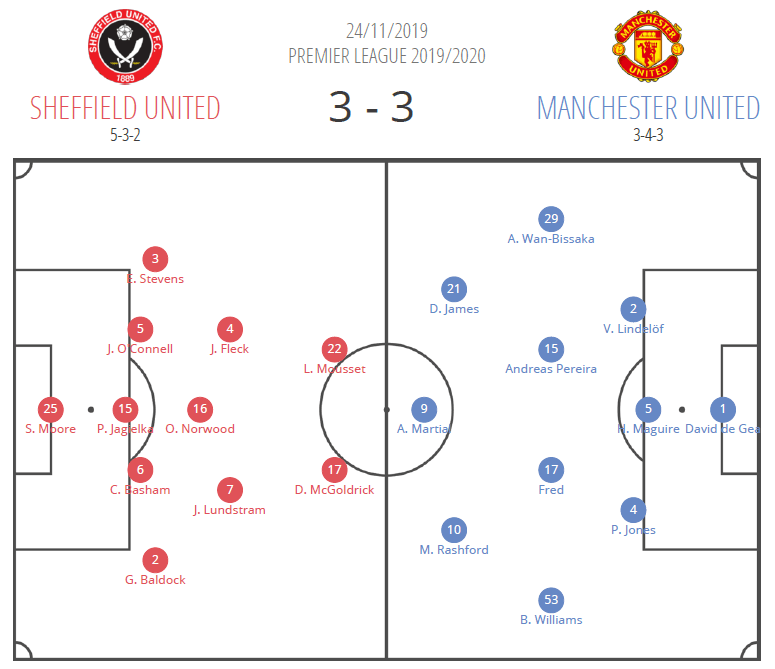
Chris Wilder chose 5–3–2 for his team. Simon Moore started in the goal because regular choice Dean Henderson was ineligible due to parent-club loan rule. In the heart of the defence, veteran Phil Jagielka was supported by Chris Basham and Jack O’Connell. Upfront, the duo of Lys Mousset and David McGoldrick were picked to start the game. The bench was filled with names like Oliver McBurnie, Billy Sharp, and Callum Robinson.
In the opposite side, it seemed on paper that Solskjær chose 3–4–2–1 for his team. However, United were shaped mostly in 3–4–1–2. Youngster Brandon Williams and new recruit Aaron Wan-Bissaka were chosen as the wing-back pair. Daniel James and talisman Marcus Rashford led the frontline with Anthony Martial slightly behind them. Academy graduates like Mason Greenwood, Axel Tuanzebe, and Jesse Lingard had to start the game from the dugout.
Sheffield’s aggressive defending
Playing at home, The Blades went aggressive and used a high-press to prevent United from building smoothly from the back. Even though they were using a high-press, Sheffield only used five players to execute the press. Wilder instructed his defenders to stay in their shape and sit behind the halfway line. The reason was to prevent the away side to attack them in transitions; especially due to Rashford, Martial, and James’ explosive pace.
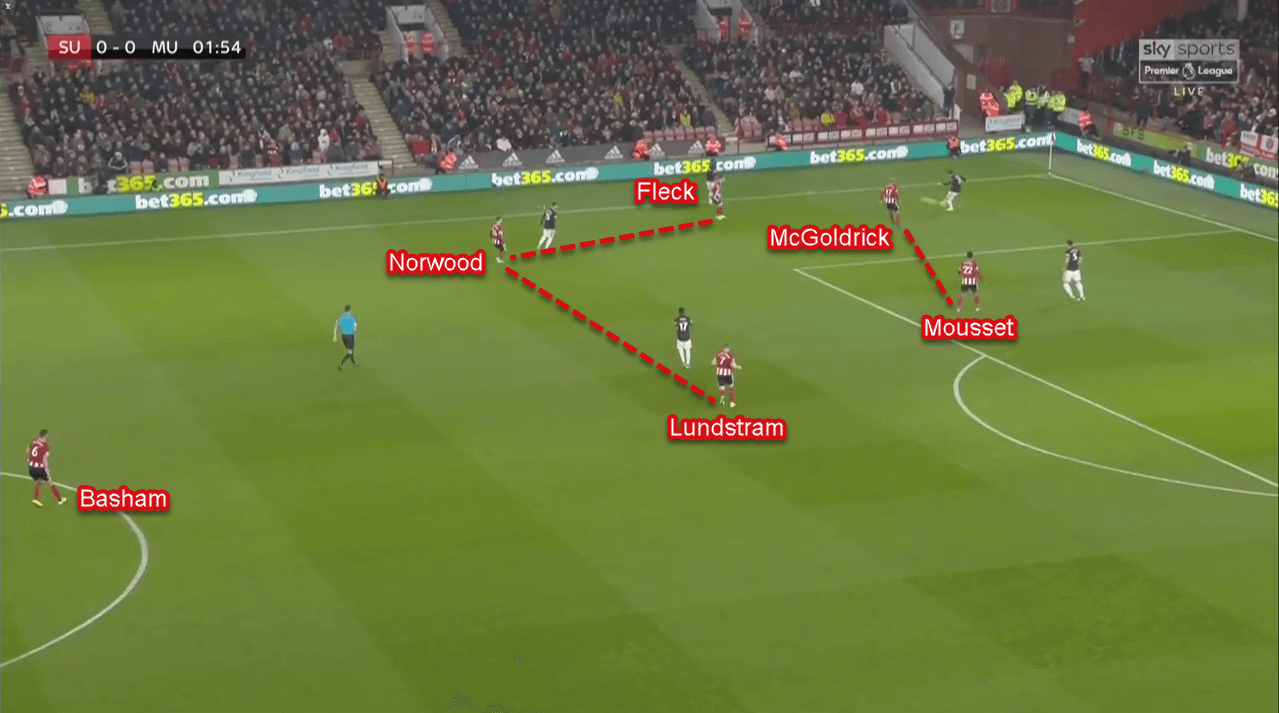
In their high-press, Sheffield preferred a man-oriented zonal marking. This means while protecting the central part of the pitch, they also tried to equal the number of United players in their build-up plays. The objectives were to prevent United from building their attack centrally and to win a one-versus-one duel in an advanced area.
Another reason this system was chosen was due to the physical advantage that Sheffield’s players had against United’s relatively small players; especially Fred and Andreas Pereira. This approach bore fruit in Mousset’s second-half goal, which came after a turnover in the midfield.
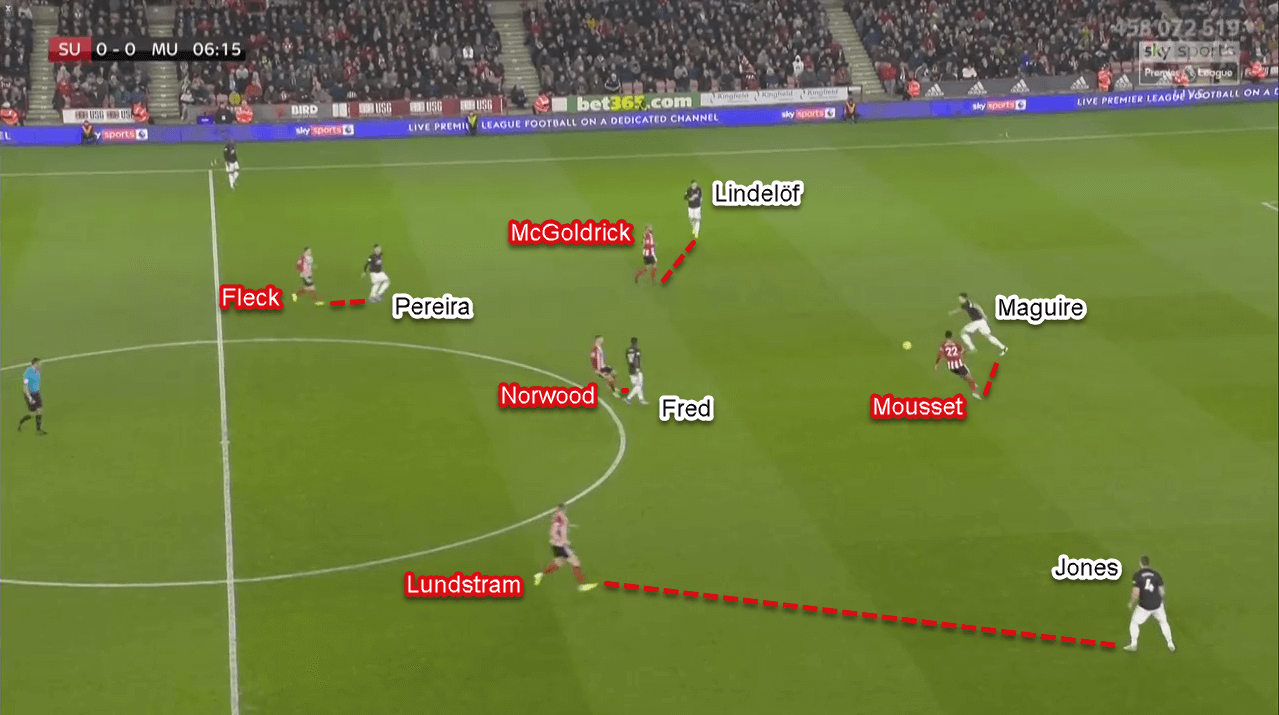
Sheffield also targeted one particular United defender in their pressing: Phil Jones. The centre-back was targeted due to his lack of on-ball quality compared to his partners. John Lundstram was instructed to join the frontline press at times to pound on Jones. As a result, United tended to build their attacks through the right flank, especially in the first half.
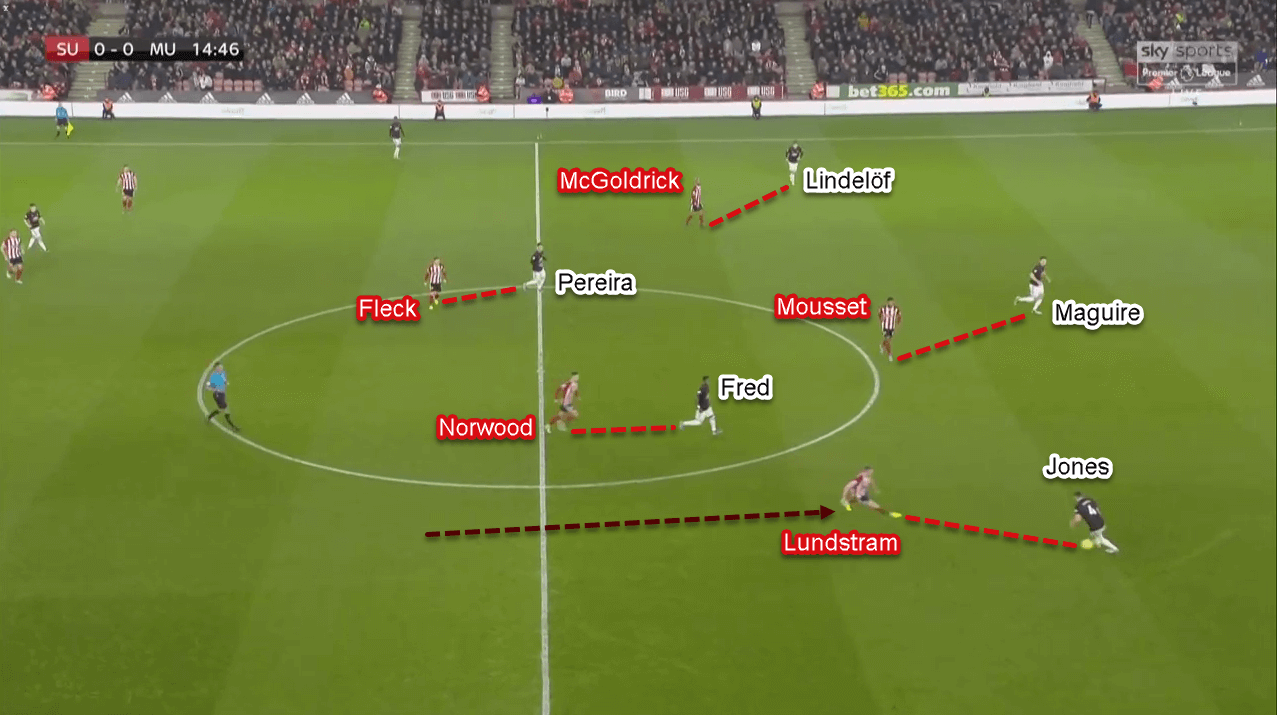
Well-drilled in deeper areas
As mentioned in this analysis before, Sheffield’s central-focused pressing forced United to build their plays through the flanks. However, in their 3–4–1–2 shape, The Red Devils only had two flank players; their wing-backs. Not only lacking players in the wide areas, Sheffield’s well-coordinated defensive display when sitting deeper was also the reason why United couldn’t do much in the first half.
When the men in black were trying to reach their wing-backs, Sheffield would adjust their shape to a temporary 4–4–2. Their ball-side wing-back would go up next to the midfield trio before the ball even reached Williams or Wan-Bissaka. Their aggressive approach was used to prevent United’s wing-backs from receiving the ball comfortably and then turning with it. By successfully preventing the turn, Sheffield would force Williams and Wan-Bissaka to return the ball; therefore restarting United’s attack.
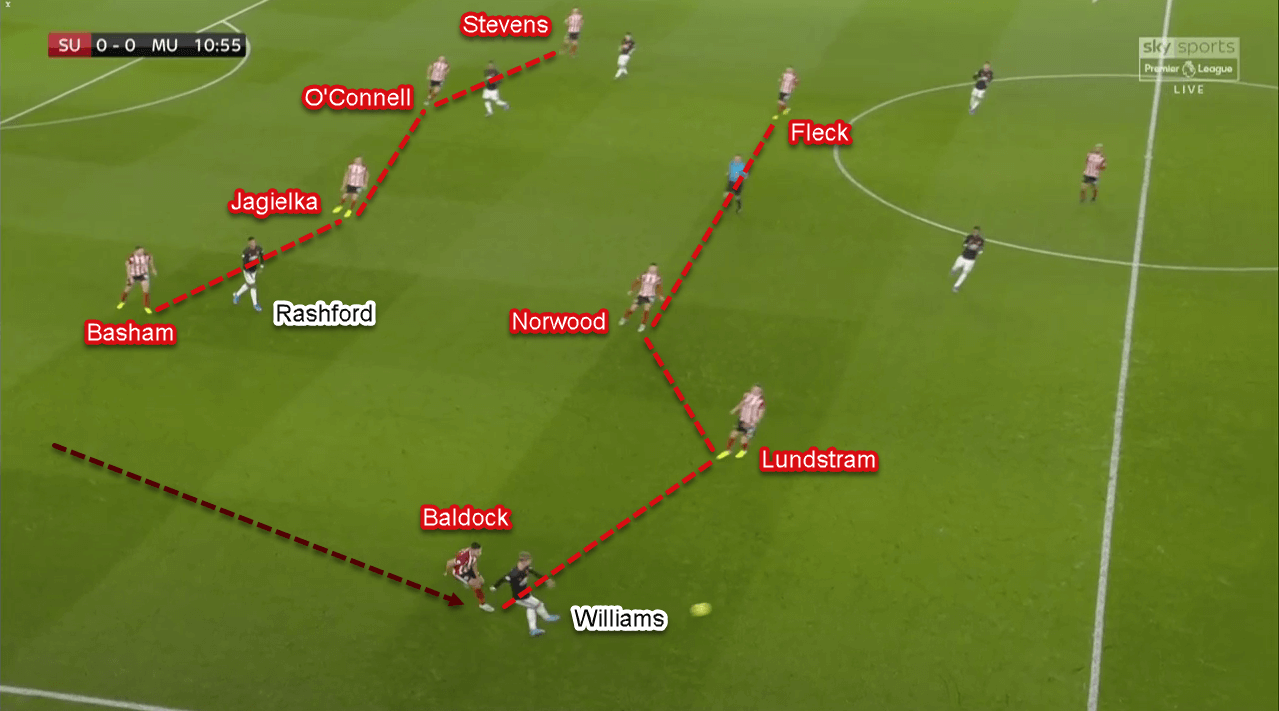
Another facet of this defensive tactic was to reduce the workload of the midfield trio. With already a huge ground to cover, Lundstram, Oliver Norwood, and John Fleck would run their lungs out quickly if they were also tasked to cover the opponents’ wing-backs.
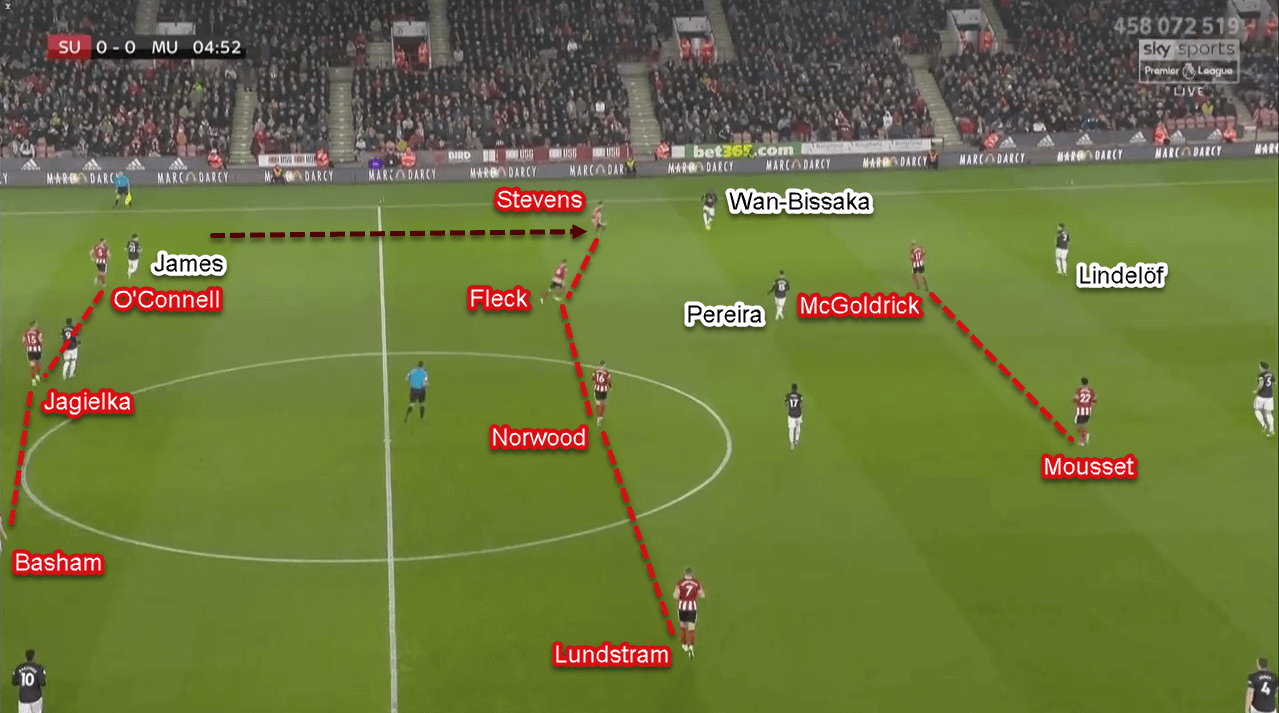
Direct in their attack
In this match, Sheffield didn’t use their famous overlapping centre-back tactic quite often. Instead, they opted to use a more direct approach by using long balls to reach Mousset, McGoldrick, or even Lundstram. They were chosen due to their size and strength to win physical duels; particularly up in the air.
Again, Sheffield targeted Jones in their direct approach. This was quite interesting because Victor Lindelöf was more known of having lesser aerial ability than the English centre-back. A probable reason they picked on Jones was maybe because of his lack of coordination with his defensive partners. At times, Jones was left in behind in the offside trap that United tried to use; Sheffield’s first goal was the main proof of this hypothesis.
Due to his abysmal defensive performance, Jones was subbed out for Jesse Lingard before the second half started.
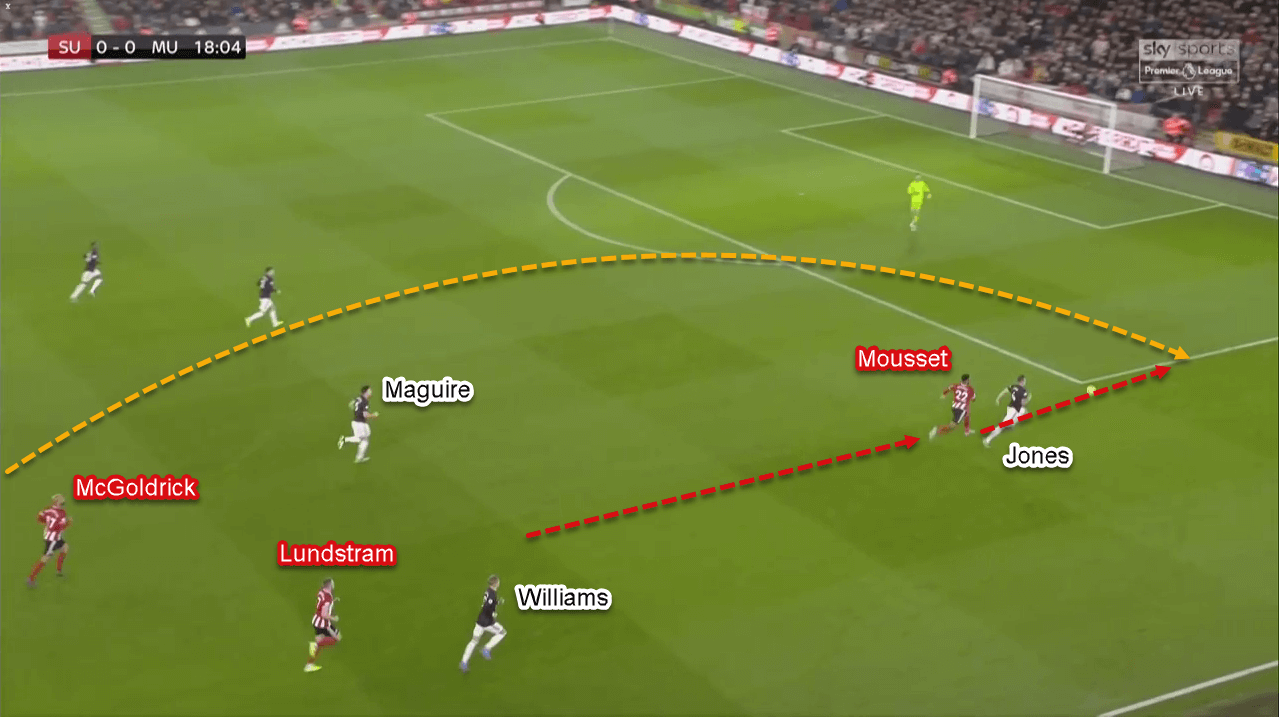
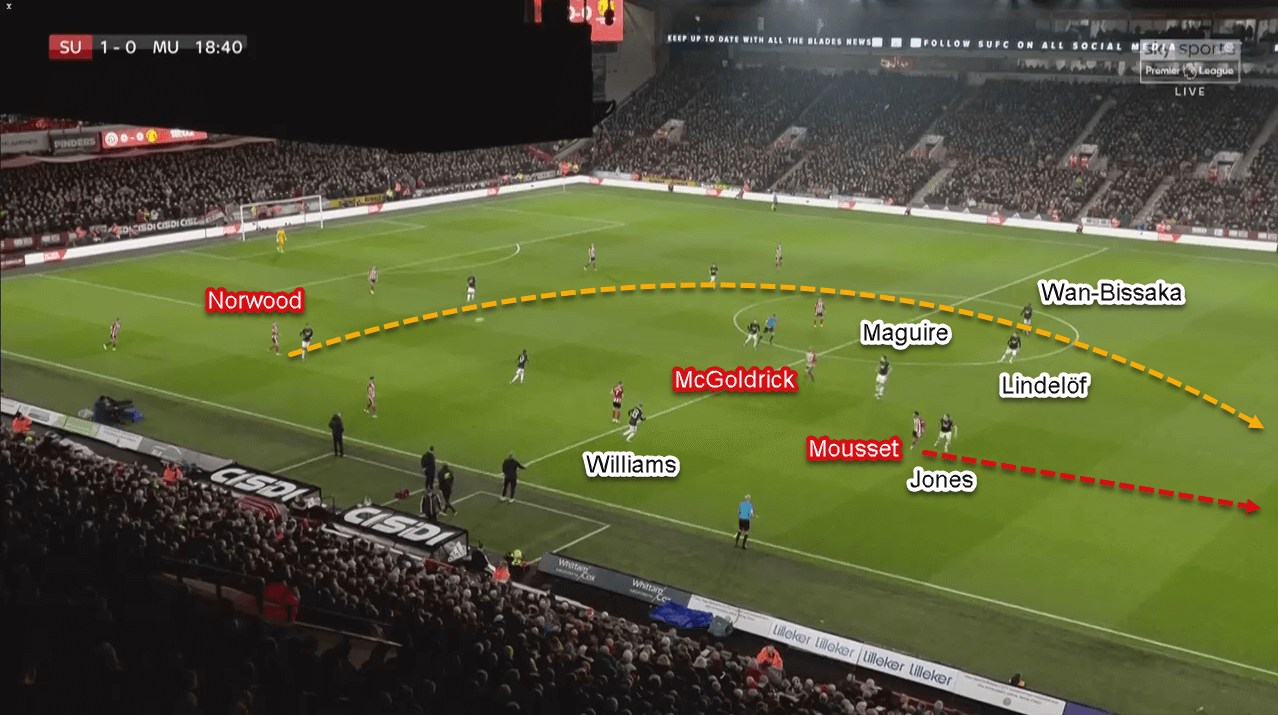
Solskjær reacted by moving his team to 4-2-3-1
Going into the second half, Solskjær changed his team’s shape from 3–4–1–2 to 4–2–3–1. In this formation, Martial played as the main striker with Lingard behind him; both Rashford and James moved to the flanks. Wan-Bissaka and Williams — now full-backs — also given more license to join the attack in the wide areas.
By moving to 4–2–3–1, United in the second half had four players in the flanks. On top of that, the Norwegian manager gave Lingard and Rashford freedom to change positions between them. Both players were very mobile and active to help to make overloads, as well as very comfortable playing in between the lines; thus making United’s attacks more unpredictable.
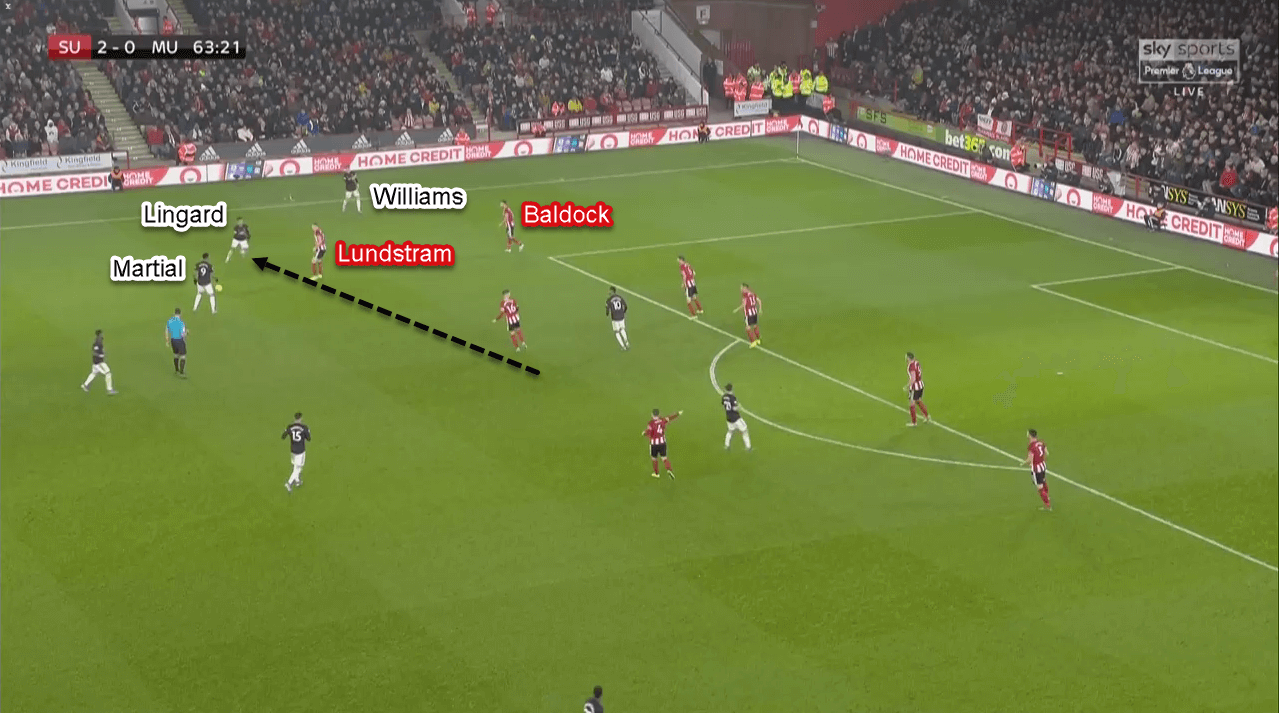
The Red Devils punished Sheffield’s 5-3-2
By having at least two players attacking through one flank, United constantly drew Sheffield’s outside midfielder to join the defensive wing-back. United then could hurt the home side by two options. First, by sending Lingard and/or Rashford to help make an overload in the flank. This overload then would release one United attacker free, either in behind or in a pocket of space in front of the backline.
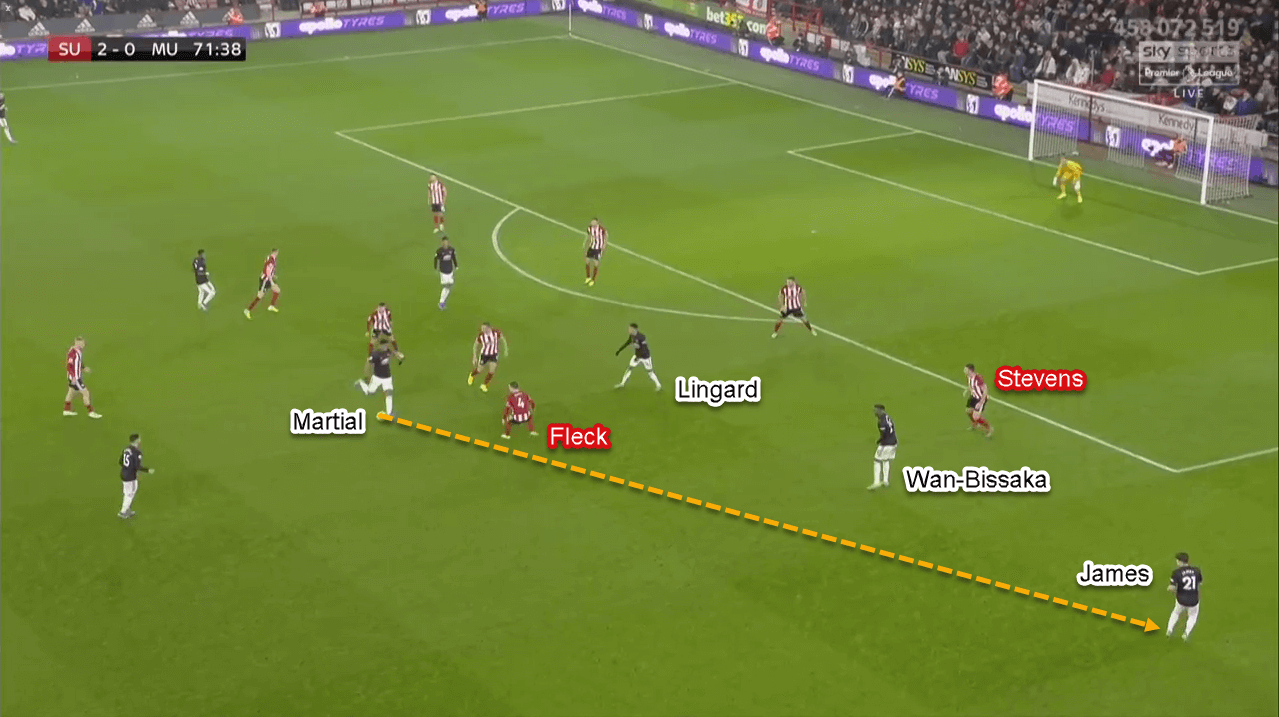
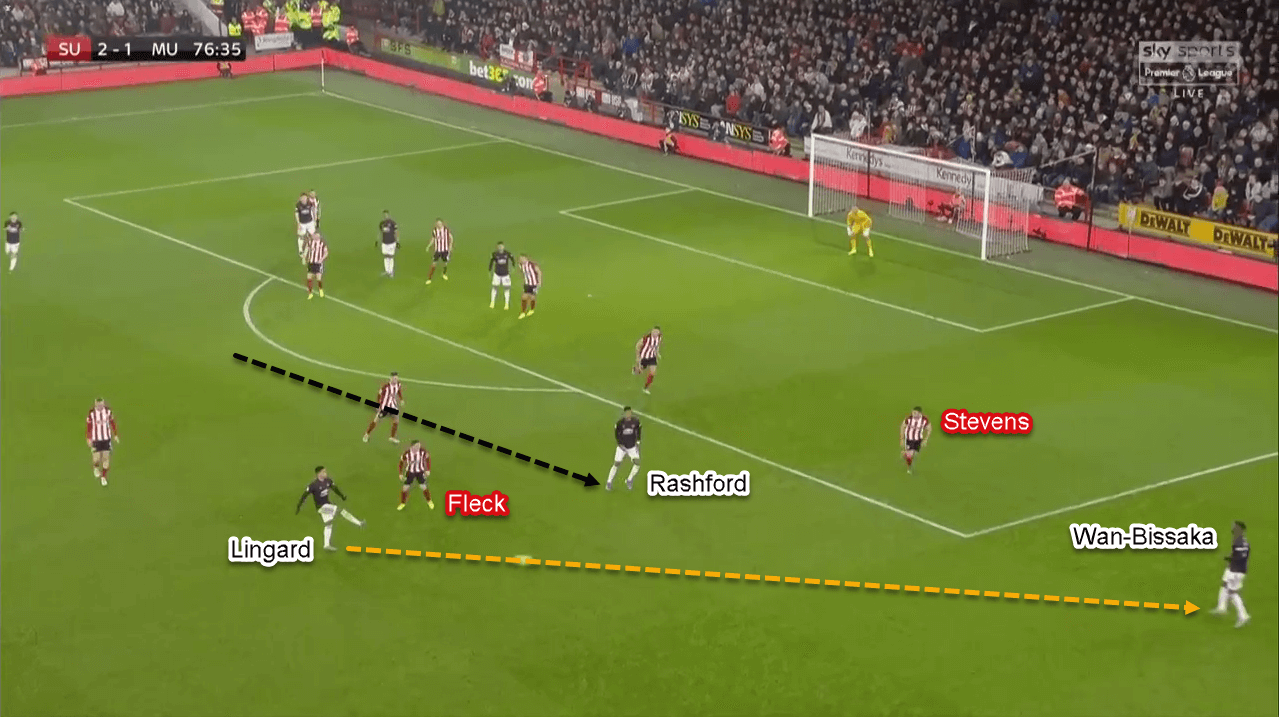
Second, by exploiting the lopsided Sheffield’s midfield and play a switch pass to ball-far wing players. In the ball-far side, United would have two players against Sheffield’s one; their wing-back. Another overload was made and could set a United attacker free in space.
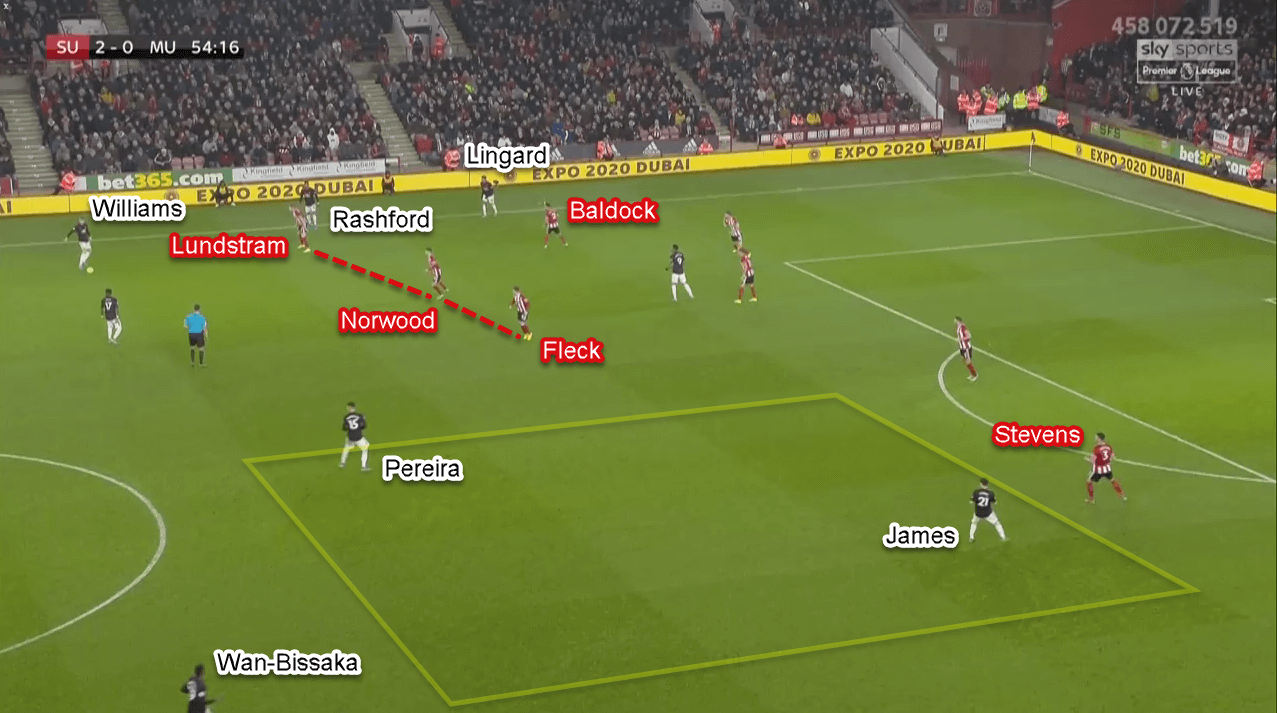
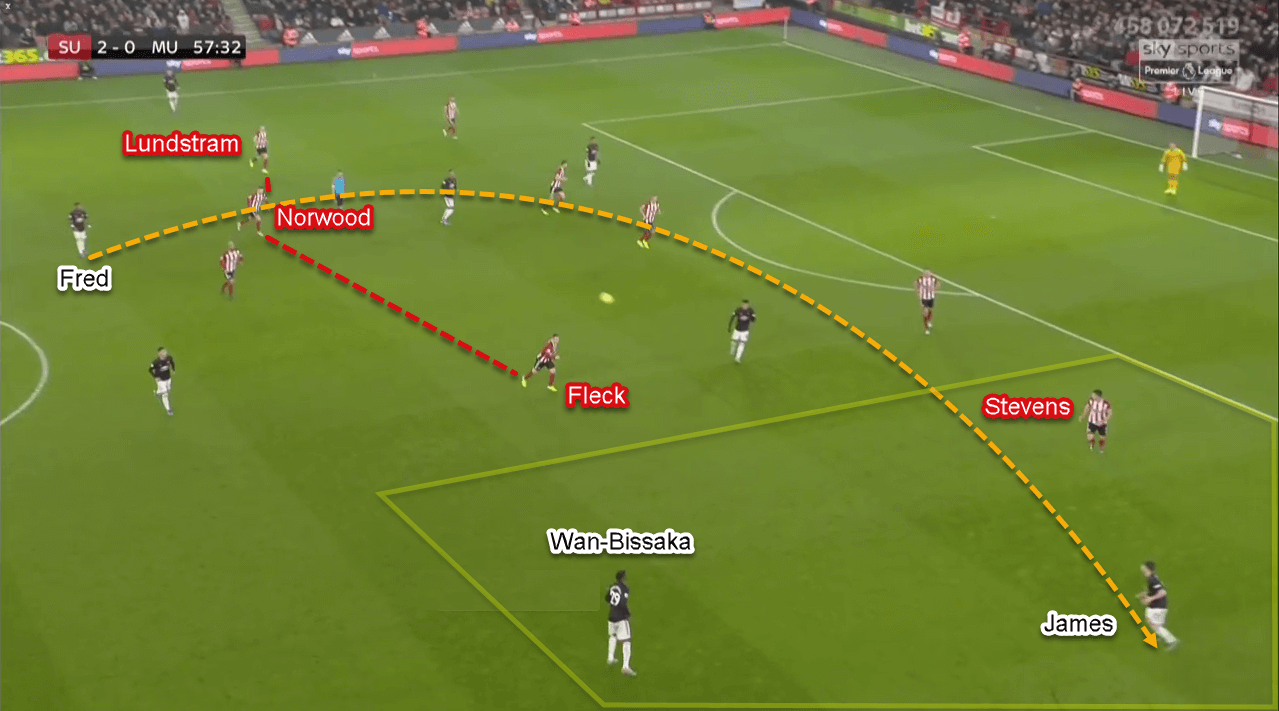
Another facet to this approach was United’s rather narrow wingers and the striker’s central positioning. By playing narrow, the wingers could pin Sheffield’s wing-back; thus releasing Wan-Bissaka or Williams free in the flank. Not only that, the striker’s central positioning was important to pin Sheffield centre-backs and prevent them to help their wing-back partner.
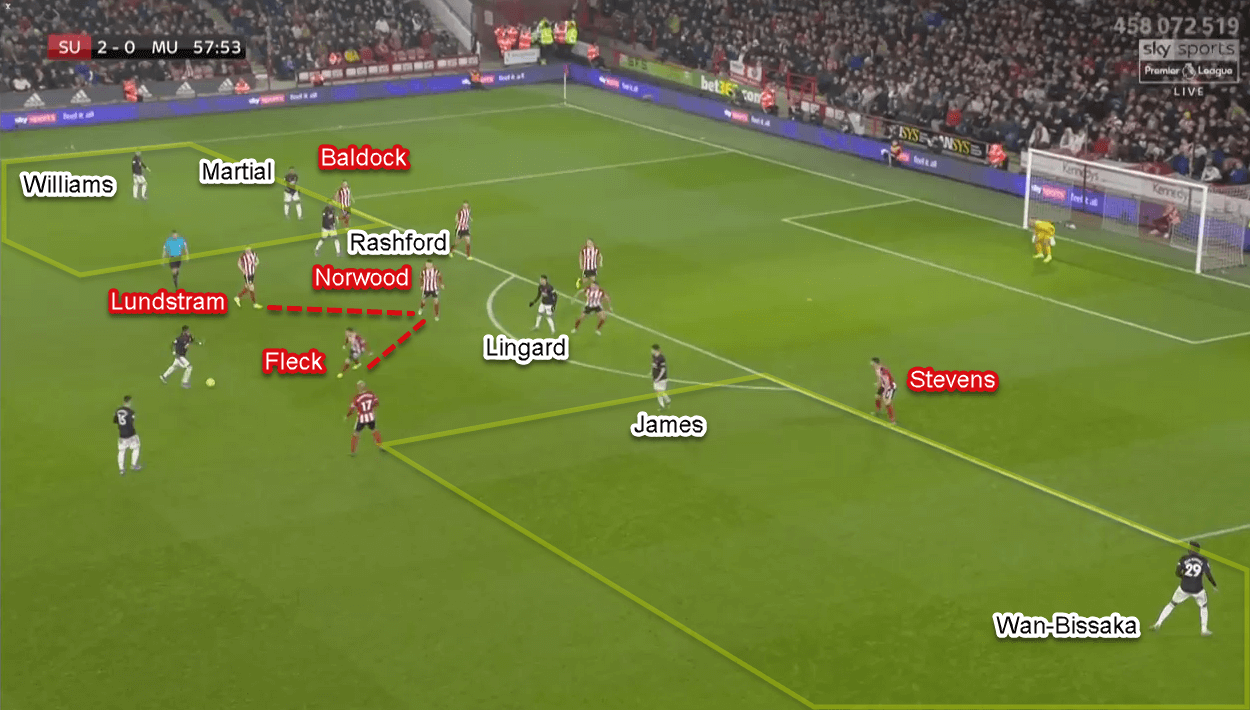
Conclusion
A thrilling game of two halves. In the first period, Wilder prevailed; credit to his high-quality defensive approach. In the second part of the game, Solskjær smartly solved his side’s wing problem; thus giving United a solid chance to win the match. However, McBurnie had another idea and forced Man. United to return home with only a point.
Wilder and Solskjær proved their worth with their tactical creativity in this game. However, with only a draw and currently sitting ninth in the table, Solskjær’s job safety is not guaranteed for the time being. Will Ole stay at the wheel or does he no longer fit the bill?
Let’s wait and see.

If you love tactical analysis, then you’ll love the digital magazines from totalfootballanalysis.com – a guaranteed 100+ pages of pure tactical analysis covering topics from the Premier League, Serie A, La Liga, Bundesliga and many, many more. Buy your copy of the November issue for just ₤4.99 here





Comments